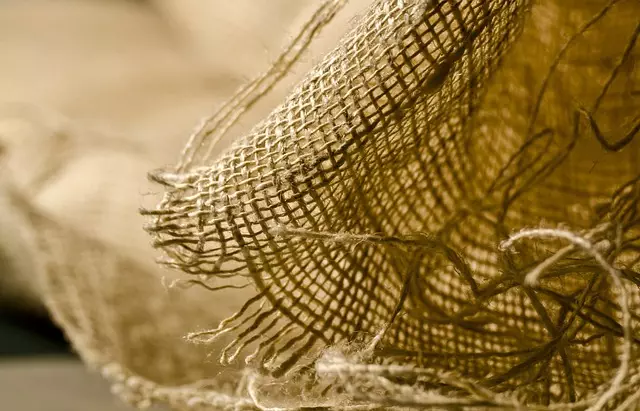The Mitragyna speciosa, commonly known as the kratom tree, is an evergreen tree native to Southeast Asia with impressive heights of up to 30 meters and a broad, spreading crown. Its distinctive leaves are leathery and glossy above, lighter beneath with possible white or yellow hues. The kratom tree's alkaloids, including mitragynine and 7-hydroxymitragynine, have been studied for their potential health benefits, particularly as natural analgesics for muscle pain relief. Traditionally used by Southeast Asian populations to relieve muscle aches, contemporary research supports this traditional use, indicating that kratom interacts with mu-opioid receptors to influence pain signaling. Maeng Da and Bali strains are commonly recommended due to their analgesic properties. Due to its regulatory status and potential side effects, it's crucial for individuals considering kratom for muscle soreness to consult healthcare professionals and use it responsibly as part of a balanced lifestyle that includes proper hydration, nutrition, rest, and regular physical activity to maximize muscle recovery and minimize future soreness. Understanding the appearance of the kratom tree is essential for appreciating its natural source and ensuring safe and informed usage.
Exploring the multifaceted benefits of the kratom tree, this article sheds light on its role in muscle soreness relief. Known for its medicinal properties, the kratom tree, native to Southeast Asia, offers compounds that can alleviate post-exercise discomfort. We will delve into understanding its botanical characteristics, as seen when one asks, “What does a kratom tree look like?” and how these features contribute to its therapeutic effects. Subsequently, we’ll uncover effective relief strategies for muscle soreness using kratom supplements, ensuring a comprehensive guide on their safe incorporation into your routine for managing muscle pain. Join us as we traverse the intersection of natural remedies and physiological well-being through the lens of kratom’s potential applications.
- Understanding the Kratom Tree and Its Medicinal Properties in Alleviating Muscle Soreness
- Effective Relief Strategies for Muscle Soreness Using Kratom Supplements
- Safely Incorporating Kratom into Your Routine for Muscle Soreness Management
Understanding the Kratom Tree and Its Medicinal Properties in Alleviating Muscle Soreness

The kratom tree, scientifically known as Mitragyna speciosa, is an evergreen tree indigenous to Southeast Asia, particularly in Thailand, Indonesia, and Malaysia. It belongs to the Rubiaceae family and can grow up to 30 meters in height, with a broad crown and leaves that are leathery and glossy on top and white or yellow in color beneath. The tree’s leaves contain a variety of alkaloids, including mitragynine and 7-hydroxymitragynine, which have been the subject of much scientific investigation due to their potential medicinal properties. These compounds are believed to interact with the body’s opioid receptors, which may provide relief from muscle soreness.
Research has indicated that kratom extracts and leaves can alleviate muscle pain through their analgesic effects. The traditional use of kratom by locals in its native regions often involved chewing the leaves or brewing them into a tea as a remedy for muscle aches and pains. Modern scientific studies support these traditional practices, suggesting that kratom’s action on mu-opioid receptors can help modulate pain signaling, thereby offering relief from muscular discomfort. Users typically consume kratom in small doses to experience these benefits, with the specific strain and alkaloid profile influencing the extent of pain relief experienced. As with any supplement, it’s important for individuals to consult healthcare professionals before incorporating kratom into their wellness regimen, especially considering the legal status and potential side effects associated with its use.
Effective Relief Strategies for Muscle Soreness Using Kratom Supplements

Muscle soreness can be an inevitable consequence of intense physical activity, and athletes, fitness enthusiasts, or anyone engaging in demanding tasks often seek effective relief strategies. Kratom supplements have gained attention as a potential aid for muscle soreness due to their alkaloid content, which includes mitragynine and 7-hydroxymitragynine. These compounds are believed to interact with the body’s opioid receptors, potentially offering pain relief and reducing inflammation. When considering kratom for muscle soreness, it’s important to note the proper strains and dosages, as the effects can vary depending on these factors. For instance, Maeng Da and Bali kratom strains are popular choices for their potential analgesic properties.
To utilize kratom effectively for muscle soreness relief, it’s recommended to start with a lower dose to gauge individual sensitivity. Kratom should be used responsibly and in accordance with local laws and regulations. Additionally, combining kratom with other recovery strategies, such as adequate hydration, rest, and proper nutrition, can enhance its effects. It’s also crucial to be aware of how a kratom tree looks like and the conditions it thrives in, as this can inform users about the plant’s natural state and potential differences in alkaloid content based on growing conditions. Understanding the botanical aspects of the kratom tree can contribute to a more informed approach to its use for muscle soreness relief. Always consult with a healthcare professional before integrating kratom into your wellness regimen, especially if you have underlying health conditions or are taking other medications.
Safely Incorporating Kratom into Your Routine for Muscle Soreness Management

When incorporating kratom into your routine for managing muscle soreness, it’s crucial to approach its use with caution and informed guidance. Kratom, derived from the leaves of the Mitragyna speciosa tree, which is native to Southeast Asia, can offer relief for those experiencing muscle discomfort. The kratom tree itself boasts large, broad leaves, and when harvested, these leaves are typically dried and then ground into a powder or capsule form for consumption. To safely navigate the use of kratom for soreness relief, one should start with a low dosage to gauge individual sensitivity, as the effects can be quite potent. It’s important to follow product-specific guidelines and adhere to recommended dosing instructions to avoid overconsumption, which could lead to unwanted side effects. Additionally, individuals should be aware of their local regulations concerning kratom use, as its legal status varies by region.
Considering the potential benefits for muscle soreness, it’s essential to integrate kratom into your routine in a manner that complements your overall health and wellness plan. This may involve pairing kratom with proper hydration, nutrition, and rest to ensure the body can recover effectively. Moreover, maintaining an active lifestyle and incorporating stretching or strength training exercises post-workout can aid in muscle recovery and reduce future soreness. Always consult with a healthcare provider before introducing kratom into your wellness regimen, especially if you have pre-existing health conditions or are taking other medications, as kratom can interact with these substances. With careful consideration and responsible use, kratom can be a valuable tool for managing muscle soreness in the context of an active, healthy lifestyle.
Muscle soreness, often a consequence of intense physical activity, can be an impediment to maintaining an active lifestyle. The article has explored the medicinal properties of the kratom tree, particularly its potential in alleviating muscle soreness, and provided effective relief strategies involving kratom supplements. By understanding the kratom plant’s characteristics, as illustrated by images of what a kratom tree looks like, readers can make informed decisions about its use. The guidelines offered for safely incorporating kratom into one’s routine aim to facilitate muscle soreness management without compromising well-being. It is clear that, when used responsibly and in accordance with expert advice, kratom supplements may offer a natural pathway to muscle pain relief.






